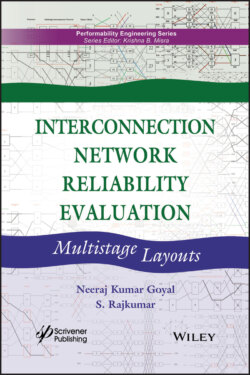Читать книгу Interconnection Network Reliability Evaluation - Neeraj Kumar Goyal - Страница 13
1
Introduction 1.1 Introduction
ОглавлениеIn recent years’ human beings have become largely dependent on communication networks, such as computer communication networks, telecommunication networks, mobile switching networks etc., for their day-to-day activities [1]. In today’s world, humans and critical machines depend on these communication networks to work properly. Failure of these communication networks can result in situations where people may find themselves isolated, helpless and exposed to hazards. It is fact that every component or system can fail and its failure probability increases with size and complexity.
Therefore, it is essential to compute and assure the reliability of these networks, which are growing and becoming complex. Reliability modeling and computation is necessary for reliability and safety assurance of these networks [2]. It also helps to identify weak links. These weak links can be improved cost effectively using reliability design techniques. Recent developments in communication hardware industry has resulted in increasingly reliable and non-repairable (need to be replaced when got bad 1) network components. However new designs involve new components, which tend to be less reliable. A good network design [3] involving fault tolerance and redundancies can deliver better system reliability at lesser cost. This allows new designs to be released faster and works reliably even when components are not mature enough from reliability point of view.
The computation of reliability measures [4] for a large and complex communication network, up to the desired level of accuracy, is time consuming, complex and costly. It has not been realistic to model and compute the reliability of real-life communication networks, which are quite large, using desktop computer due to large execution time and high memory requirements. Such computations are usually performed on high-end processors for critical systems only. Reliability professionals and researchers have carried out a lot of research and developed techniques to minimize these efforts and develop a practical tool for all the communication network designers [4–6].
This book presents novel and efficient tools, techniques and approaches for reliability evaluation, reliability analysis, and design of reliable communication networks using graph theoretic concepts.
